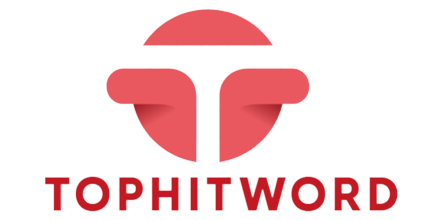Meta Title: Cost-benefit analysis on AI-medical scribes tools for hospitals.
Meta Description: Explore the cost-benefit analysis of using AI medical scribes in the hospital. Discover the advantages, disadvantages, and challenges that come with it.
Health care has lately been defined by advancements in technology, and one of the latest additions is AI medical scribe/note-taking software. These tools are supposed to help healthcare workers by cutting down on paperwork and freeing doctors to do what patients need them for instead of what may be required to write nursing notes. However, do we achieve good value when implementing AI medical scribe software? This article examines the framework in which hospitals can incorporate AI medical scribes, discussing the financial aspects and the advantages of/ and issues arising from using this technology.
The Costs of Implementing AI Medical Scribe Software
The commitment of healthcare practitioners is tremendously high due to the numerous administrative tasks that people in the healthcare sector are continuously exposed to. It has been established that doctors end up with a cycle of 62% on documentation and administrative work, which may lead to doctors being burnt out and low patient satisfaction levels.
Some of the tasks performed by medical scribes have been this burden, and the use of AI medical scribe software is seen as a possible solution to this problem since it aims to increase the efficiency of the documentation process and let doctors focus on patient care. However, one must question whether this technology is worth the investment before incorporating AI in hospitals, considering the costs involved:
- Initial Investment and Setup Costs: The adoption of AI medical scribe/note-taking software may prove to be costly initially, with users having to invest heavily. These include, but are not limited to, purchasing the required hardware, software acquisition, and penetration into the current Electronic Health Record (EHR). Also, it is expensive since it may require some inputs to fit it to meet the hospital’s needs.
- Training and Support: The main idea is to use advanced technology, and healthcare professionals need to be trained to use the software. As for volunteers, this training can be very time-consuming and expensive. Also, technical support for the selected system to maintain smooth performance and update software is cost-intensive.
- Maintenance and Upgrades: Similar to any other software, maintenance of the AI medical note-taking system and occasional updates to bring in the best improvements and guard against possible threats or flaws are highly recommended. These are mere maintenance expenses that may accumulate for a long time, so it becomes extremely important for hospitals to set aside money for these expenses.
The Benefits of Implementing an AI Medical Scribe Software
- Increased Efficiency and Productivity: Depending on the software in use, AI-powered medical scribes can substantially cut additional hours doctors spend on documentation. It also saves time for the doctors and allows them to attend to more patients in the same period, as they are not slowed down by note-taking. As with other processes, this may result in increased ability of the hospital to process more patients and thereby generate more revenues.
- Improved Accuracy: Manual documentation involves errors since the task is done largely by hand, which has detrimental effects, especially when practiced in the medical field. However, the software is designed to deal with medical scribes; patient information can be recorded more accurately than conventional methods. These improvements in error reduction can overall improve the safety of patient care and subsequently decrease the likelihood of liabilities.
- Enhanced Patient Satisfaction: Doctors require less time on paperwork when there is dedicated software that handles it, meaning that more time will be spent with patients. The following interaction can ultimately enhance patient results and improve patient satisfaction levels. Being fully attended to or receiving focused attention from a doctor or any health care provider can, in a way, influence their patient’s trust and comfort in that provider.
- Cost Savings in the Long Run: Some of the costs associated with medical scribe technology are ongoing purchase and start-up costs, which might be steep, but the resulting cost savings in the long run would be significant. Since candidates can take the examinations without the need for personnel to administer and supervise, less administrative staff is required, which directly reduces the cost of the doctor’s time spent on documentation. Furthermore, document accuracy can minimize the chances of legal claims and sound a positive note for the hospital by increasing its efficiency.
Challenges and Considerations
- Integration with Existing Systems: One significant issue is maintaining compatibility between AI medical scribe software and the current EHR systems utilized by clinics. Compatibility problems always cause many interruptions, and the program’s advantages will not make up for this loss.
- Data Security and Privacy Concerns: Where advanced AI mechanisms are incorporated into healthcare, data security, and patient rights should be the top priority. There is also a need to prompt hospitals to ensure that AI medical note-taking software meets every law binding on it as a show of concern for the security of patients ‘records.
- Dependence on Technology: Medical AI scribe software is beneficial, but providers must recognize the possibility of overreliance on the technology. This might cause communication breakdown, where computer problems may slow down hospital functions and harm the patients. To address such risks, it is essential to have existing backup strategies in place.
- Ethical and Regulatory Issues: AI is a good aspect of the healthcare system but has some ethical and regulatory issues. Hospitals need to assess all the legal compliances concerning healthcare in order to abide by all the legal requirements and also consider the ethical standards regarding the use of AI in healthcare provision.
Conclusion
The use of AI medical scribes in a healthcare facility is one solution that can help solve the problem of overload in hospitals. The effective and efficient use of AI medical scribes could lead to better documentation, increased accuracy of information, and patient satisfaction. However, the measures require careful initiation and implementation since they come with initial costs and possible challenges. Thus, it becomes paramount for hospitals to understand and maximize reimbursement by working out the costs and benefits involved in the process and the probable effects on patients at large.
Overall, AI medical scribe software should only be introduced after analyzing the necessities and possible capabilities of a particular hospital. AI medical scribes are designed in such a way that if put to good use, they could bring about change in the healthcare industry that would help reduce concentration time on other tasks and be patient-centered.

